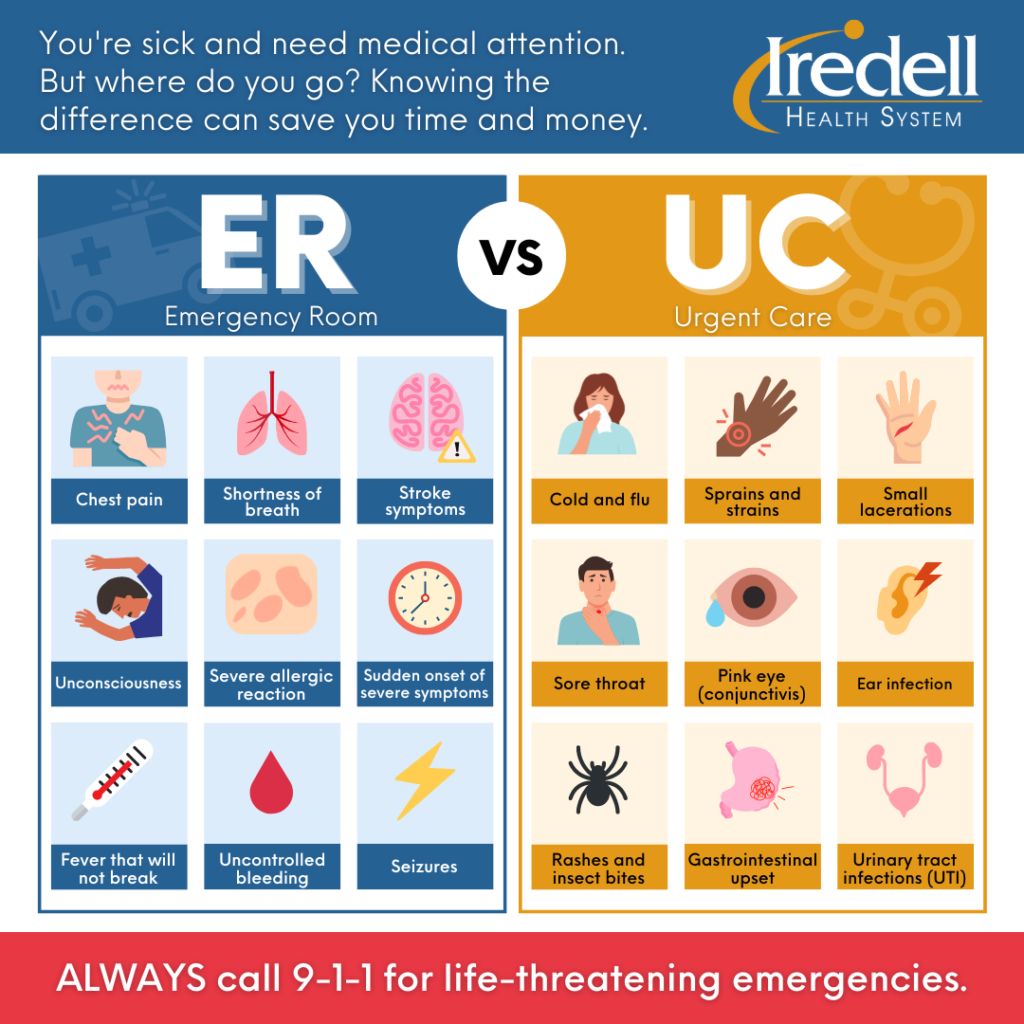Share this article
If you’re sick and need medical attention, where should you go? The emergency room or an urgent care clinic?
You’re preparing dinner and accidentally cut your finger. It’s been a few minutes, but the bleeding hasn’t stopped yet and it seems like you may need some stitches. Should you go to the emergency room or should you go to urgent care?
Knowing where to go to treat your condition can save you time and money. First, it’s important to understand the differences between the two. The biggest difference between an urgent care and an emergency room is the type of cases they can handle.
“An urgent care is a medical facility that provides medical treatment for non-emergent, minor, acute illnesses and injuries. Patients should choose urgent care when they need evaluation or treatment of a minor injury or illness,” said Jonathon Bringolf, MD, medical director of Iredell Urgent Care and Wake Forest emergency physician.
Urgent care generally treats conditions like colds, the flu, earaches, rashes and low-grade fevers. They can also treat non-life-threatening injuries such as sprains, bruises, minor broken bones or small cuts, like the one that occurred while prepping dinner.
Urgent care is a good option if there’s a health concern, but your primary care provider isn’t readily available. Urgent care clinics are typically faster than an emergency room and care can be cheaper too.
If your primary care provider is not available, a virtual or telehealth appointment might be the right choice. It’s a great option for people who cannot access traditional care and need help with an issue that is not urgent. Telehealth makes it easy to access health care from the comfort of your own home, if you have internet access and a phone, computer, or tablet with video capabilities.
Emergency rooms typically treat patients based on the severity of their condition. They also have more resources like medications, laboratory tests, imaging mechanisms and staff.
According to Bringolf, an emergency room is the right choice if you have a condition that is life-threatening or could cause disability. This includes severe bleeding, chest pain, and stroke symptoms.
Always call 911 to get to the emergency room via ambulance if:
- You’re unsure that you’re facing an emergency.
- The condition threatens life or limb.
- The person could get worse on the way to the hospital, or traffic is an issue.
- Moving the person could cause further injury.
- You are experiencing any symptoms that could possibly be a heart attack or stroke.
See the infographic above as a quick tool that lists which conditions are treated at emergency rooms versus urgent care clinics.
Credit: Iredell Health System